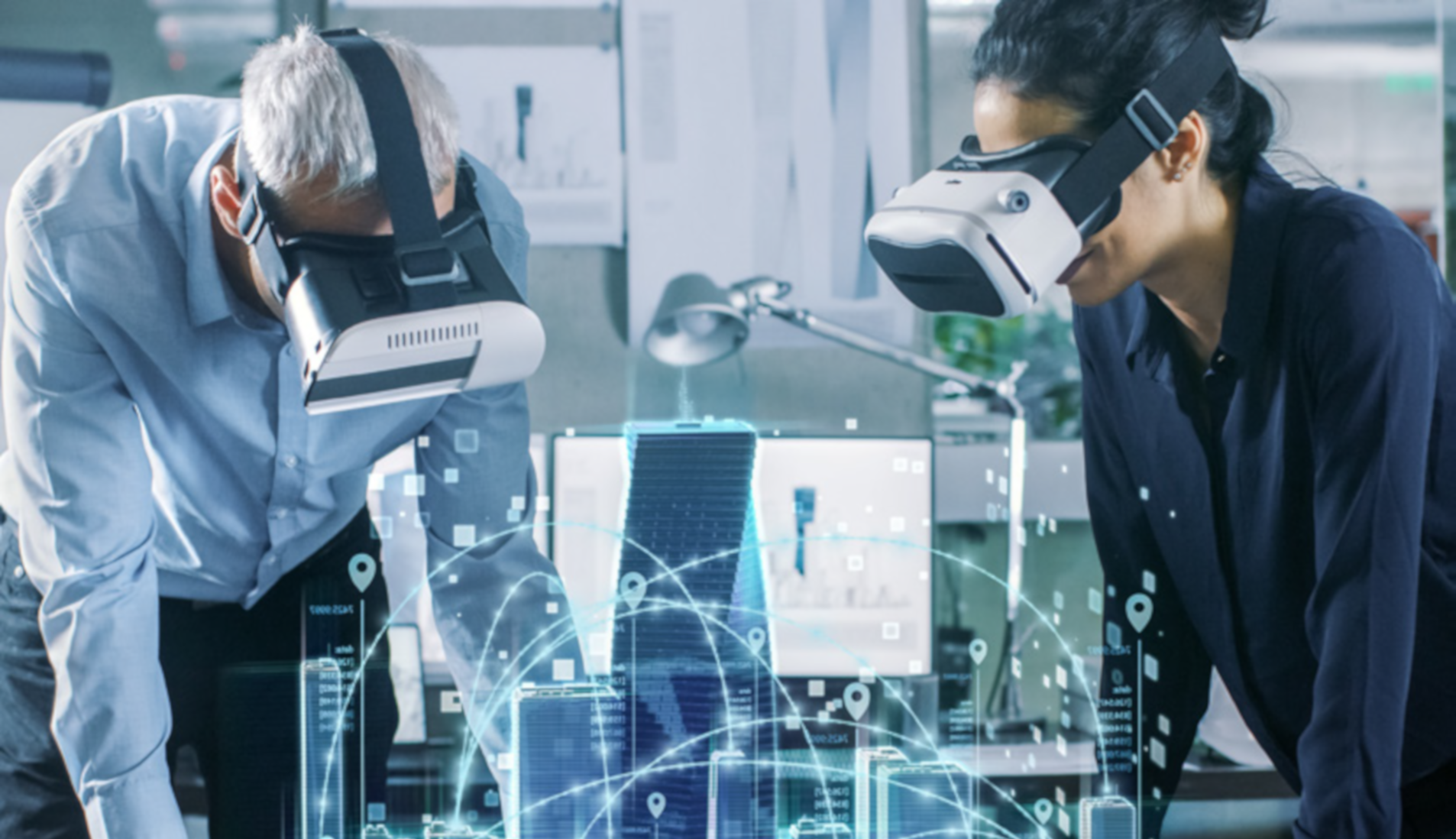
Immersive technology has suffered several false starts over the last twenty-five years: it fell into the Gartner hype cycle’s ‘trough of disillusionment’ first after Sega’s widely publicised virtual reality (VR) headset disappeared without ever actually reaching the shelves in 1993, and then again in the early 2010s thanks to unreliable technology and limited accessibility. In 2019, however, it looks like it might actually be here to stay.
TechCrunch estimates the immersive technology sector will be worth $108 billion in 2021. Citi suggests $569 billion by 2025. But despite these staggering projections, many people’s understanding of the sector fails to extend beyond the viral Augmented Reality (AR) sensation of Pokemon Go.
The reality is that the technology is developing and diversifying at breakneck speed, and that 60% of AR/VR spending in 2018 was in fact for commercial uses. Commercial applications are set to expand even further to represent 85% of the worldwide total in 2021 (IDC, 2017), being deployed in a wide range of sectors including retail, real estate, healthcare, manufacturing, and tourism among others.
Subsequently, immersive tech is increasingly becoming the focus of not only tech start-ups in Silicon Valley, but equally huge multinational corporations like Ikea and Volkswagen.
The umbrella term covers several types of technology, of which terminology applications have been widely disputed. The four variations shall be described as such:
VR and AR are touted to be the most successful immersive technologies, and despite the current high interest in the former, a majority from within the industry expect the AR market to surpass VR in revenue, potentially even within the next three years. This is likely to be a consequence of AR’s higher suitability to everyday use and its applicability across a wide range of sectors.

Policy focus is beginning to shift
With this latest surge in interest and success, policymakers have begun to take note. This is especially true of the UK, where there has been more significant uptake than elsewhere: at the end of 2017, consumer spend on VR headsets and content in the UK stood at $120 million, representing 21% of total Western European market value.
As with all emerging technologies, there will be elements of the technology that either come into direct conflict with existing regulatory frameworks, or reveal significant policy gaps that need to be covered.
Here we offer a unique overview of a number of policy areas in which these tensions are already playing out, including content regulation, privacy and data protection, intellectual property rights and questions of liability. It identifies a range of challenges that policymakers will be concerned about while providing insights into how government might respond.
The many recreational and commercial opportunities of immersive technologies are undisputed. The extent to which policymaking can become a positive and enabling force of the sector is now being put to the test.
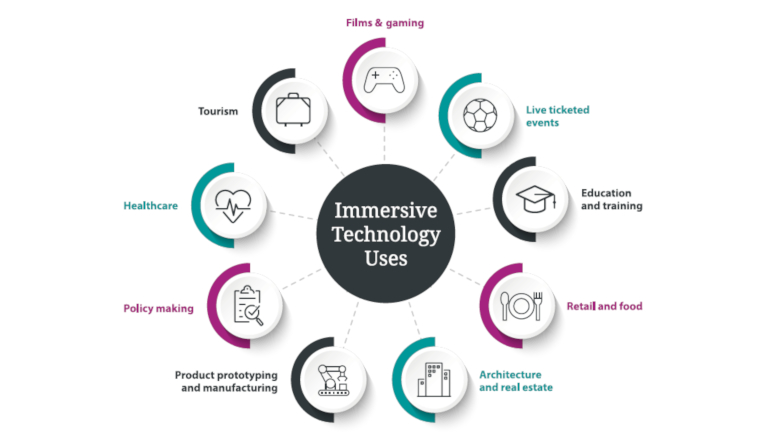
| USE CASE | FILMS AND GAMING |
| APPLICATION | Provides users with a more immersive way to experience film, games and other entertainment media that is an upgrade on 3D options |
| EXAMPLES | Pokemon Go: An AR mobile game developed by Niantic that became a global craze, peaking at 28.5 million users daily Carne y Arena: A short VR film project depicting immigration that won an Oscar in 2017 Star Trek – Bridge Crew: A VR action-adventure video game that immerses players into the Star Trek gaming environment allowing multiple players to enter into the game together if desired |
| USE CASE | LIVE TICKETED EVENTS |
| APPLICATION | Opens up accessibility to live events in a way that stops viewers from needing to travel or spend large amounts on tickets |
| EXAMPLES |
NextVR: A VR platform with contracts with various sporting events including NBA (basketball), Wimbledon (tennis), WWE (wrestling) and International Champions Cup (football) |
| USE CASE | EDUCATION AND TRAINING |
| APPLICATION | Enables training for dangerous, high pressure or simply expensive to use environments in more realistic scenarios than ever before, including practice of medical surgery technique or combat simulations |
| EXAMPLES | Volkswagen Digital Reality Hub Group: A VR training simulation for Volkswagen employees to train in a simulated industrial workspace Street Smarts VR: Immersive VR training for police departments to improve officer judgement and reduce avoidable conflict Striker VR: A haptic VR gun with a tactile feedback system that allows military trainees to practise single shot, out-of-ammo, three bound burst, chainsaw and pulse rifle replicants |
| USE CASE | RETAIL AND FOOD |
| APPLICATION | Allows prospective customers to visualise how purchases will look when bought, thereby encouraging the transaction |
| EXAMPLES | IKEA Place: An AR mobile app that allows users to see what IKEA’s furniture would look like in their own home MAC: Powered by Modiface, an AR virtual ‘try on mirror’ that allows prospective customers to try make-up products on their own face before purchase Kabaq: An AR platform that presents virtual dishes through a mobile phone camera. One client was Domino’s, for whom it created augmented reality visualisations of pizzas on Snapchat that users could then purchase directly |
| USE CASE | ARCHITECTURE AND REAL ESTATE |
| APPLICATION | Permits prospective buyers or investors to visualise property, both prior to it being built and for remote viewings. This saves time, increases accuracy for architects, builds emotional connection with the property, offers global reach and saves money |
| EXAMPLES | Sotheby’s Curate: An AR app that applies interior design and real shoppable furnishings to vacant unfurnished properties, allowing prospective buyers to see it in the light of multiple styles and functions Strutt & Parker: A virtual viewing service that gives prospective home buyers and tenants the ability to walk from room to room using a digital device or 3D headset SmartReality: An AR mobile app that uses the phone’s camera to overlay interactive content over printed construction plans to create 3D visualisation of building projects. The app is also available in a VR format |
| USE CASE | PRODUCT PROTOTYPING AND MANUFACTURING |
| APPLICATION | Enables manufacturers to plan through production processes and foresee end results without having to build expensive and time-inefficient prototypes |
| EXAMPLES | Ford: Using VR, engineers can translate CAD designs into virtual cars and then inspect components down to the millimetre before they are actually built BAE Systems: VR technology is used to critique the 3D design of Navy ships before they are built at great expense Lockheed Martin Space: Staff are using Microsoft HoloLens AR headsets to display virtual models that more clearly demonstrate engineering and manufacturing instructions, and help to plan the final product |
| USE CASE | POLICY MAKING |
| APPLICATION | Lets policy makers better engage with areas that they might otherwise be detached from, and model outcomes |
| EXAMPLES | Transport for London: TfL built a virtual reality environment of Victoria Station, populated with AI-driven virtual passengers, to permit them to model the consequences of prospective changes and thus ensure optimum success UN’s Clouds Over Sidra: A VR documentary aimed at generating empathy with Syrian refugees which led to double the amount of fundraising expected at a UN fundraiser in Kuwait 6x9: A VR film produced by The Guardian sought to influence US policymakers on the issue of solitary confinement in prisons |
| USE CASE | HEALTHCARE |
| APPLICATION | Facilitates training of medical staff; distraction for patients from painful/unpleasant procedures; and is increasingly a method for various psychological treatments |
| EXAMPLES | Proximie: AR technology that provides surgeons with remote assistance and training from anywhere in the world; Floreo: VR platform that provides social and communication training for those on the autism spectrum; AppliedVR: A company that has partnered with 100+ hospitals to distract patients from pain, ranging from when having unpleasant procedures done through to women giving birth |
| USE CASE | TOURISM |
| APPLICATION | Encourages potential tourists to travel to new places that they have experienced via immersive tech |
| EXAMPLES | Hold the World: The Natural History Museum, London, has developed a VR tour that takes virtual visitors on a behind the scenes tour of the museum with David Attenborough as the tour guide West of England Combined Authority Smart Tourism: £5 million funding from UK Government in March 2018 has gone into delivering AR and VR experiences for tourists in Bath and Bristol, including the Roman Baths and Millennium Square Qantas Airline: A VR mobile app that allows prospective tourists to visit Australian tourist attractions, including a virtual fly over of Uluru and the Great Barrier Reef |
Immersive technologies currently operate within a range of existing policy and regulatory frameworks, many of which centre around the content that immersive experiences serve.
In this context, three of the most significant issues include:
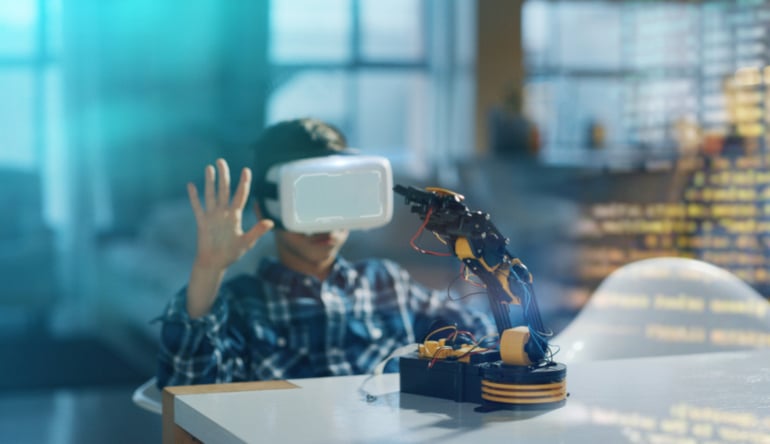
Advertising that makes use of immersive technologies is already very much a reality. Cadillac has created a virtual showroom, for example, where dealership salespeople can assist prospective buyers to virtually experience driving Cadillac’s models through a VR headset, without dealerships having to actually keep all vehicles in stock. The company’s digital innovation lead estimated in May 2018 that 25% of sales in one particular showroom in Connecticut, U.S., could be attributed to the use of the VR technology.
Another more widespread example has been Snapchat’s introduction of AR lenses over phones’ camera view, enabling advertisers to superimpose three dimensional objects on to real world scenes, including everything from Warner Bros.’ film marketing materials to Dominos’ pizzas.
As of yet, this increasingly popular use case for immersive technologies has not seen specialised regulation. The pre-existing regulation for advertising in the UK is set by the Advertising Standards Authority (ASA), which enforces the Code of Non-Broadcast Advertising and Direct & Promotional Market (CAP Code). Until a more specific piece of regulation is passed applying to VR and AR technologies, companies are assuming that these more general rules currently in place apply.
While this code does not explicitly provide for AR and VR platforms at present, in February 2017 the ASA did issue new guidance on e-cigarette advertising prohibitions in which it listed “in-game advertisements (including AR and VR environments)” as one of the channels in which advertisements were forbidden. This suggests that the ASA does indeed consider itself responsible for advertising that occurs through the medium of immersive technology. With the industry claiming that immersive advertising results in as much as ten times greater clickthrough rates compared to traditional video advertisements, it is likely that the ASA will put this under the microscope sooner rather than later.
Policy and regulatory questions yet to be addressed:
For the time being, Oculus VR, Google Daydream VR, Microsoft Hololens AR and other applications are using the International Age Rating Coalition (IARC) process which “provides a globally streamlined age classification process for digital games and mobile apps”.
Other classification boards are beginning to cater more specifically for the introduction of VR and AR too. For example, the Entertainment Software Rating Board (ESRB) in the U.S. updated its prior rating of an arcade-style shooter game called ‘Super Stardust Ultra’ from E to E10+ when a second version of the game was released in virtual reality. Similarly, the Australian Classification Board rated ‘Batman Arkham VR’ as mature, with ‘VR interactivity’ as one of the key designations in the rating process.
In the UK, the British Board of Film Classification (BBFC) has explicitly stated its role in classifying “linear VR video and experiences for distribution on physical media, under the Video Recordings Act 1984 and via digital distribution under our digital video classification scheme”, and started reviewing VR experiences from June 2016.
Self-regulation is also occurring as a pre-emptive measure by the industry. Oculus gives its experiences a ‘comfort rating’ dependent upon how frightening they are judged to be, or whether it is more likely to make users feel dizzy, and have more generally recommended a 13 year cut off age for use of their technology.
Policy and regulatory questions yet to be addressed:
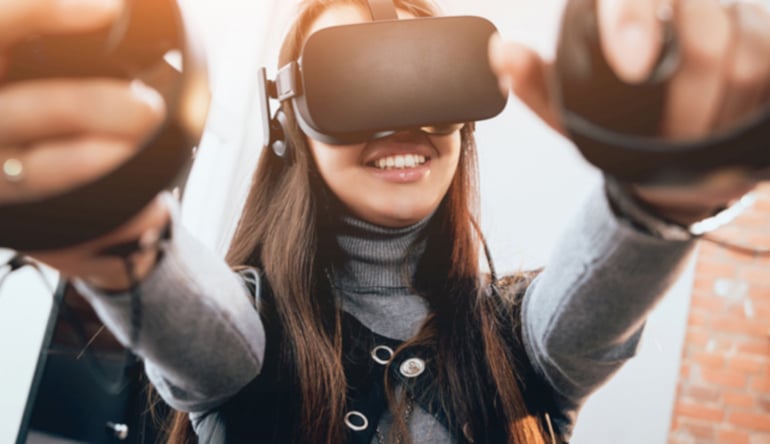
At present, manufacturers are liable for defective products, under the UK General Product Safety Regulations 2005 and the EU General Product Safety Directive. There are also more specific regulations when equipment is used as toys, under the Toys (Safety) Regulations 2011, or for medical purposes, under the Medical Devices Regulations 2002. While the nuances differ, the core thrust is the same: “No producer shall [supply or] place a [consumer] product on the market unless the product is a safe product”.
In keeping with this, immersive technologies have already been closely scrutinised for their safety. One issue that has been highlighted is the quality and design of the virtual reality content that users experience, and whether it will make consumers feel motion sickness or vertigo. Developers of VR experiences in particular are now paying renewed attention to acceleration movements, field of view, refresh rates and the number of frames per second, as all of these factors can cause a mismatch between the visual cues users experience and their sense of real balance, resulting in feelings of nausea.
To supplement their greater overall caution exercised in the design process, developers have also been working with headset providers like Oculus to provide consumers with comfort ratings; for example, experiences that are rated ‘comfortable’ avoid camera movement, player motion or disorientating content effects. This industry self-regulation also stretches to its recommendations to users that they take a ten or fifteen minute break from the technology every thirty minutes, even if they do not think that they need it.
Psychological and distractive side effects
Other concerns include worries that immersive technologies can be almost too successful in their objective of immersing users, resulting in distraction from the real world to such an extent that users endanger themselves.
The viral uptake of Pokemon Go led to a varied array of sensationalised media stories where users fell off cliffs, abandoned their children, got into shootouts, were killed by drivers, and caused traffic jams and accidents by neglecting reality in favour of immersion in the AR game. Given this, it was unsurprising when US New York state Assemblyman Felix Oritz declared that Pokemon Go’s makers had a corporate responsibility for the safety of their users and threatened legislation if Niantic did not fix its safety issues.
In the UK, the Department for Transport declared in 2013, before the MR glasses headset Google Glass even came to market, that it was in discussions with police forces to ensure that individuals were forbidden from using the technology while driving.
Finally, reports of psychological effects resulting from immersive technology experiences are increasingly a cause for concern. This ranges from VR users overestimating physical ability in the real world following virtual activities such as driving or parkour, and then injuring themselves; through to violent personality traits being adopted long term by users who have developed strong identification with violent characters that they have played in an immersive environment.
Policy and regulatory questions yet to be addressed:
Beyond the concerns that often apply to digital and Internet-of-Things devices regarding protection of data from hacking, questions continue to be raised about the ethical collection of data in the first place.
The European Union’s recently implemented General Data Protection Regulation (GDPR) and its UK manifestation, the Data Protection Act, have stirred up intense political focus upon data privacy and data ethics. Given immersive technologies’ collection and processing of vast quantities of data, the industry will feel the heat of this scrutiny even more than most.
Still on the horizon is a thicket of data-related issues pertaining to what data companies can ethically collect; whether data collected is relevant to service provision or over-reaching and unrelated; and privacy of those in the surrounding environment of the technology use, beyond just the consenting user.
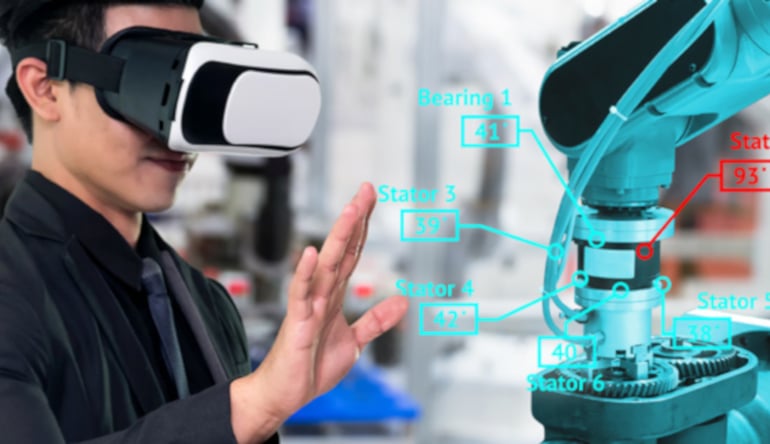
One particular data issue that immersive technologies create is that of unprecedented biometric data collection.
In gaming applications of VR, for example, online avatars may mirror real-world movements, thus creating kinetic fingerprints that can be tracked and stored. Meanwhile, new medical applications of MR technology, such as Proximie (see page 7), are necessitating huge volumes of personal patient data to be made available over digital networks, with live images of intimate surgical procedures being broadcast over distance.
The latest, even more contentious, addition to biometric data collection is eye-tracking within virtual and mixed reality headsets, which would track where users look and for how long. Tobii, a Swedish company at the forefront of developing this technology, has said that they would never allow applications to store or transfer this data, or even aggregate over multiple users without an explicit opt-in consent process. Such assurances have not appeased everyone however: experts have suggested that the mere existence of this technology “potentially converts every individual donning a headset in the privacy of his or her own home into an instant consumer study” (Klaris Law, 2018).
Can employees give true consent?
The processing of biometric and health data is now prohibited in Article 9 of the GDPR, with the exception of cases where explicit consent of the data subject has been obtained. Gaining such explicit consent is often difficult for companies anyway, but this is especially exemplified in the collection of biometric data for the industrial applications of VR and AR, of which there are clearly many as outlined on page 6.
The Guidelines on Consent by the European Data Protection Board (EDPB) state that due to the imbalance of power within an employment relationship, “it is unlikely that the data subject is able to deny his/her employer consent to data processing without experiencing the fear or real risk of detrimental effects as a result of a refusal” (2018). The Guidelines do add that consent can be freely given in cases in ‘exceptional’ circumstances, where it is clear that there will be no impact upon the employee’s relationship with their employer as a result. However, to take a hypothetical example of an employee being asked to undertake VR training to improve their work skills, it is plausible that they might feel unable to refuse for fear of being viewed as less well trained than their consenting peers.
Policy and regulatory questions yet to be addressed:
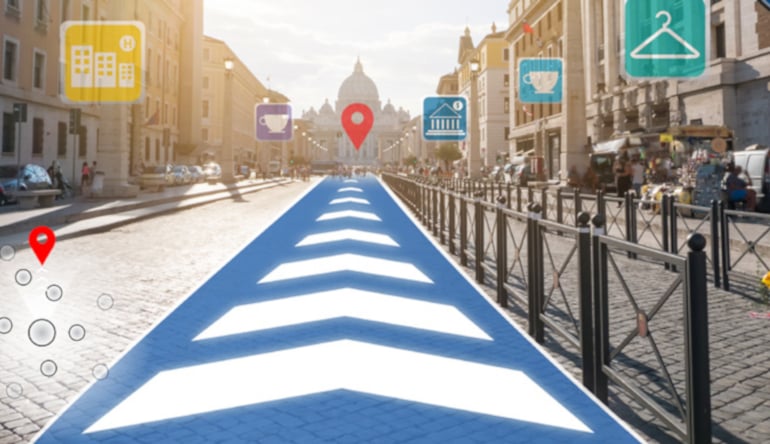
In addition to immersive technology’s collection of biometric and health data, many applications also collect large amounts of location-based data. Location data is one of the types of data that can identify a data subject, and is thus included in the formal definition of sensitive ‘personal data’ under GDPR Article 4.
For AR and MR applications in particular, collection and processing of location data is often not only just a feature of the technology, but in fact a requisite for its functioning. Augmented reality and mixed reality technology operate using simultaneous localisation and mapping (SLAM); recognition based software, which uses a camera to identify visual markers; or location data, derived from a GPS, digital compass, velocity meter or accelerometer.
This degree of necessity could therefore ensure that such companies are conforming with GDPR regulations, as per the legitimate interests clause: the Regulation states that processing of such data is lawful where it is “necessary for the purposes of the legitimate interests pursued by the controller or a third party”. If companies have no other way of achieving the objective of immersive experience provision, and the data subject reasonably expects the processing activity to take place, then such data collection and processing could be legally viable.
Alternatively, a much more reliable means by which to ensure GDPR compliance would be obtaining explicit opt-in consent from the data subject prior to the application even functioning.
However, even assuming that consent has been provided or that the legitimate interests provision stands, the location-based component of these immersive experiences could leave users open to risk – something that the media is already picking up on. For example, in 2016, a news story gained significant traction in Missouri, USA, where thieves used the Pokemon Go application to lure a dozen app users into danger by setting up game incentives in a secluded area, where the players were then robbed at gunpoint.
Policy and regulatory questions yet to be addressed:
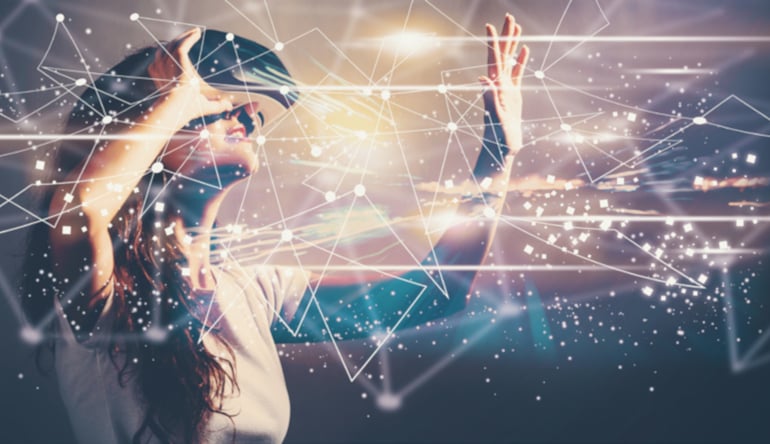
In the vast majority of cases, a user of immersive technology has consented to its use and thus willingly undertaken any data risks associated with this. However, proliferation of Augmented Reality applications on mobile devices and Mixed Reality on headsets and glasses may throw up unique new data issues, because, as well as the user, other people in the near vicinity may also (perhaps unknowingly) become data subjects.
The potential for these applications to allow surreptitious recordings and pictures meant that the UK’s data regulator, the Information Commissioner’s Office (ICO), said in 2014 that wearers of ‘smart glasses’ with the capability of recording images and video came under the same rules as CCTV. The most updated regulation of CCTV data collection, post-GDPR implementation, states that data subjects are entitled to be informed when their personal data is being processed, data subjects may access requests of CCTV footage, and security measures such as encryption are essential.
The ICO has also publicly stated that smart wearable technologies are included under GDPR Article 35, which declares that data controllers carrying out data processing “likely to result in a high risk to the rights and freedoms of natural persons” should conduct an assessment of the impact of their envisaged activity.
Regulatory reception to smart glasses in Europe and worldwide
Similarly, in 2019, the European Data Protection Board (EDPB) expressed their concerns that “the recent trend in smart glasses design leads to models that are difficult to distinguish from ordinary glasses. In consequence, personal data of non-users may be captured secretly and without effort… [and] basic data protection principles such as confidentiality and the right to informative self-determination of non-users are at stake”.
Moreover, the EDPB has said that depending on the connections of the smart glasses device to other services, the incoming ePrivacy legislation (as well as GDPR) may also apply.
One of the most famous case studies of this technology that has been introduced into the market is Google Glass – smart glasses that use visual, audio and location-based inputs to display relevant information to the wearer. Despite a light on the front of the glasses making clear when the glasses’ camera was on, the product received very mixed reviews after its release in 2013, illustrated by its ban in certain venues in the U.S., not because of issues with the technology itself, but because of the risk of attacks on wearers by other people who felt they were having their privacy intruded.
Google Glass thus discontinued its consumer edition of the glasses, but later re-released the technology in 2017 for industrial use cases. ‘Glass for Enterprise’ has since been adopted by various corporate partners, including GE, Boeing and Volkswagen.
Google Glass has also started to be applied to other innovative uses, including helping autistic children to read facial expressions of people that they are looking at through the glasses. While this use case is beneficial in this particular application, it does also demonstrate the efficacy of the technology in collecting potentially highly sensitive information about others.
Policy and regulatory questions yet to be addressed:
Immersive technology companies are reporting higher rates of concern about legal issues arising from the actual sales of their products than 18 months ago (Perkins Coie, 2019) - a natural progression as the industry develops beyond laboratories and testbeds. The experience of actually entering the market has brought new issues surrounding IP and liability to the fore.
The first instance in which intellectual property rights need to be considered by the immersive tech industry is when designing and manufacturing new products, as industry is currently finding there to be a lack of clear delineations around various contributors’ different stakes. In the many cases of collaboration between multiple companies to work on different aspects of a VR or AR system, these businesses need to carefully consider how intellectual property ownership is managed and how returns will be shared between them.
Beyond the initial production processes, copyrighting for the content provision is also becoming increasingly complex in this industry. First and foremost, in tension with the Trade Marks Act 1994, complexity arises from the need to use significantly more copyrighted images and texts or trademarked brands, products and services in order to build the highly realistic environments that VR is renowned for.
This even extends to music, for example. In the case of traditional media, such as a film, a character might enter a room with a song playing for a fixed scene and therefore the amount of time and price of the copyrighted content is also fixed. On the other hand, in a non-linear VR experience, there is no way of knowing how long an interaction with the music will take, and therefore how to charge for the use of this content.
Copyrighting issues might come to the fore in the use of augmented reality as well. In particular, the camera feature available through the lens in which users view their experience means that screenshots or recordings might inadvertently be made of copyrighted or trademarked material, and thus constitute infringement.
Who owns technology-created material?
Finally, immersive technologies are producing the novel dilemma of how to deal with new material being made in an immersive environment. If users create new designs, artwork or products within virtual reality or augmented reality worlds, do they own the virtual property or does the provider of the system?
On the one hand, there is a parallel of owners of content losing full ownership of rights when they upload material to online platforms such as Facebook. But would this be viable for platforms used as commercial tools? For now, the process is determined by the terms of use provisions laid down by the individual platform provider, specifying where ownership and usage rights fall in this circumstance, but it may be that regulation will be updated to incorporate a more universal solution to such a dilemma.
Policy and regulatory questions yet to be addressed:
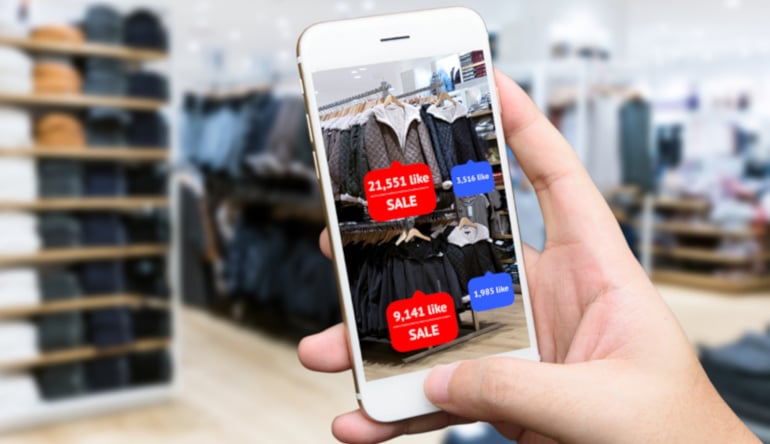
Because of the complex model of product creation for immersive technologies, assigning liability in the case of something going wrong is made difficult. As discussed in Part 1.3, there are a number of product safety regulations that already exist, applicable to immersive technologies. However, because of the complex model of product creation, assigning liability in the case of a fault could be particularly challenging. The immersive tech industry is especially fragmented, separated into hardware and software producers, content producers, marketing and distribution, among others. Consequently, in the event that harm is caused, it is very hard to pinpoint where responsibility lies in a long process of collaboration and joint working.
There are a number of hypothetical situations in which these questions might be asked. One is in the context of the health and safety concerns discussed earlier, where faults would need to be traced back to particular points in the production process. This could range from faulty hardware through to poor design, if in the case of a mixed reality headset, information overlaid in real time were to distract a user from identifying a real-world hazard and thus result in injury.
Duty of protection for online crimes
Another might be situations where a VR or AR application allows users to interact with others, where the provider will then need to enforce compliance with pre-existing laws. Who would be responsible for crimes that are committed in this online forum, such as impersonation, fraud, harassment or offensiveness?
This particular dilemma is addressed to an extent by the Electronic Commerce Regulations 2002, designed for online platforms in general. As per these regulations, platform operators are not liable for unlawful material that they are not aware of and/or only process automatically, as an intermediary. That said, these regulations do also specify that in order to retain this exemption, platform providers should act ‘expeditiously’ to remove or disable access to content when they become aware of illegal activity. There have also been increasing calls for reform to allocate greater responsibility to platforms for hosting such content, so it is possible that regulation may become stricter in the near future.
Policy and regulatory questions yet to be addressed:
Government also has a number of enabling tools and levers at its disposal which can be used to bolster emerging industries and sectors. In the UK, these include:
Financial support. Government is already working to alleviate what many immersive specialists see as a significant barrier to continued development: finance. Recent initiatives have taken the form of the £33 million Creative Industries Sector Deal; Digital Catapult’s mentorship programmes and Immersive Labs; and numerous tax incentives.
Fostering skills. With a growing industry comes a parallel growth in demand for workforce expertise, which in recent years has forced VR and AR companies to draft in talent from other similar industries to plug the gap. In order to ensure that the industry can continue to grow, Government could put pressure on UK universities to follow the lead of institutions like UCL, Bradford and Glasgow and offer more immersive technology-focused degree courses.
Accelerated 5G provision. Immersive technologies generate and necessitate the transfer of immense quantities of data, and only 5G would fully enable this – something that the UK’s communications regulator, Ofcom, has itself acknowledged. Current 4G infrastructure has insufficient download speeds and debilitating latency issues for the technology’s full potential to be realised. While at present the UK is not set to launch commercial 5G networks until late 2019 or 2020, and widespread coverage unlikely until 2022 or later, Government could accelerate this process if it felt there was an urgent need.
Coordination of standards development. Steps to develop and implement industry standards are being taken by a range of groups working independently, including Khronos Group, Virtual Reality Industry Forum, the Moving Pictures Experts Group (MPEG), DVB, 3rd Generation Partnership Project (3GPP) and the IEEE Standards Association. However, Government’s work as a convenor is required, if the overlapping and duplication of work is to be avoided.
Leading by example. Some of the biggest reported barriers to immersive tech adoption have been the continuing scepticism about its usefulness; a failure to think creatively about where it could be applied; and worries about the upfront cost being worthwhile. For precisely these reasons, a final way in which Government could better facilitate growth is by leading by example, deploying immersive technologies in policy making, smart city development and/or provision of public sector services.
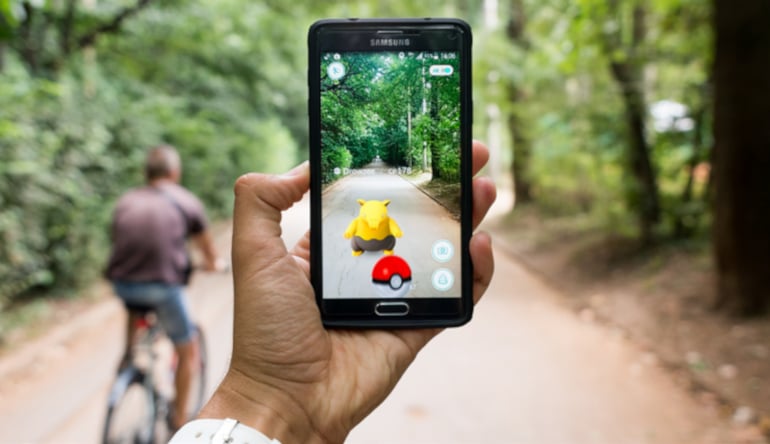
While the breadth and range of immersive technology forms and applications means that each company will have slightly unique issues to consider, the core nature of immersive technology will present three key battlegrounds in the coming months and years: content regulation, ethical data management, and rights and responsibilities. You can read more about these in our report here.
If you are interested in talking to us about these issues and how we can help your business navigate the emerging political and regulatory landscape, please get in touch.